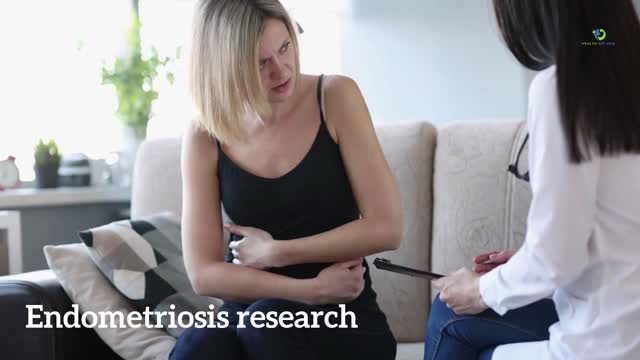Premium Only Content

Endometriosis research
Endometriosis research. In this article, we discuss some common misconceptions about endometriosis. These include myths about the cause and treatment of the condition as well as other aspects of it. In our Medical Myths series, we take myths head-on–exposing the truth and wrestling them away. We use expert insight and peer-reviewed research to expose falsehoods. This brings clarity and allows patients to make proper healthcare choices. It’s a condition in which a tissue-like lining on the inside of the womb grows outside of it. It often causes pain during periods, sexual intercourse, and urination or bowel movements. Sexuality is measured on a spectrum.
Endometriosis facts vs fiction
Endometriosis research
Terms like “male”, “female”, and more will be use to describe the sex someone is assigne at birth. This article will provide links below that go over the basics of sexuality and gender expression. Endometriosis can be a seriously uncomfortable condition. And while often seen on its own, it may also affect fertility or be a precursor to other conditions like endophthalmitis (inflammation of the lens). Although extremely rare, endometriosis in males can occur. Furthermore, because of its many symptoms and the fact that it’s hard to diagnose, people can face a delay in diagnosis. Women with a family history of endometriosis are at a higher risk of developing this condition. Other risk factors include periods that began before the age of 11 or between 35 and 39 years old. Other signs of endometriosis are heavy menstrual cycles that last more than 7 days.
Having a short cycle oftentimes increases the risk of endometriosis in some individuals. It requires surgery which is a common procedure done in an under-the-pill anesthetic. If you have endometriosis, there may be additional treatments for your symptoms and fertility. One option is hormone therapy, which can ease the pain associated with endometriosis and infertility caused by it if your condition is severe. There is also a surgery that may help you in both cases if that’s need. Despite the abundant evidence, many myths still surround this condition, leaving a lot of people with a lot of questions. The disorder is often not taken as seriously, which can have far-reaching consequences for patients.
TO BUY HEALTHY PRODUCTS CLICK HERE
1. Periods are normally very heavy, very painful, or both
Endometriosis research
Read More: 7 Habits For Good Brain Health
Experts estimate that more than half of all menstruating females experience some pain during periods and that severe pain sometimes indicates the presence of endometriosis.
Dr. King told Medical News Today:
Not every person has endometriosis, but many do, unfortunately. Pain can show up in other sections of their body such as bowel, urinary pain, and ovulation pain. Periods can come in a variety of lengths and some of the typical signs include bleeding in between periods, as well as bleeding midway through menstruation. Some women will not experience heavy or significantly heavier days in their cycles.
Dr. Stegmann added:
“Periods are usually very heavy or very painful — it’s only a myth that many people don’t.” This is only one end of the spectrum. Some people do have very heavy, painful periods, but that’s not the standard. Some have mild cramps and light periods, while others have pain between periods. So it’s best to speak to a healthcare professional if you’re concerned.
-
 LIVE
LIVE
Steven Crowder
2 hours ago🔴 We are So Back: How Trump Flexed American Muscle and Owned Colombia
43,828 watching -
 LIVE
LIVE
LFA TV
22 hours agoICE ICE BABY! | LIVE FROM AMERICA 1.27.25 11am
4,960 watching -
 34:58
34:58
Rethinking the Dollar
51 minutes agoMonday Morning Check-In: DeepSeek Sends US Equites Sinking
-
 1:15:25
1:15:25
Graham Allen
3 hours agoTrump BULLIES Colombia Into Following His Policy!! + FINALLY PETE IS CONFIRMED!
32.4K72 -
 1:01:50
1:01:50
Kyle Fortch
2 hours agoCallum Kerr Joins Netflix’s Biggest Shows & Signs First Record Deal | THE ONE SHEET S1E1
2.63K1 -

Matt Kohrs
9 hours agoMARKETS CRASH: The DeepSeek Panic || The MK Show
46.7K5 -
 39:56
39:56
BonginoReport
3 hours agoTrump Alpha-Males Colombia (Ep.126) - 01/27/2025
77.1K114 -
 1:59:53
1:59:53
Jeff Ahern
3 hours ago $1.31 earnedMonday Madness with Jeff Ahern (6am Pacific)
17.9K -
 1:21:30
1:21:30
Game On!
11 hours ago $1.94 earnedPatrick Mahomes does it AGAIN!
14.9K9 -
 15:20
15:20
Misha Petrov
3 hours agoReacting To Liberal MELTDOWNS Over Trump’s Return - Gen Z Is Planning a REVOLUTION?!
34.8K21